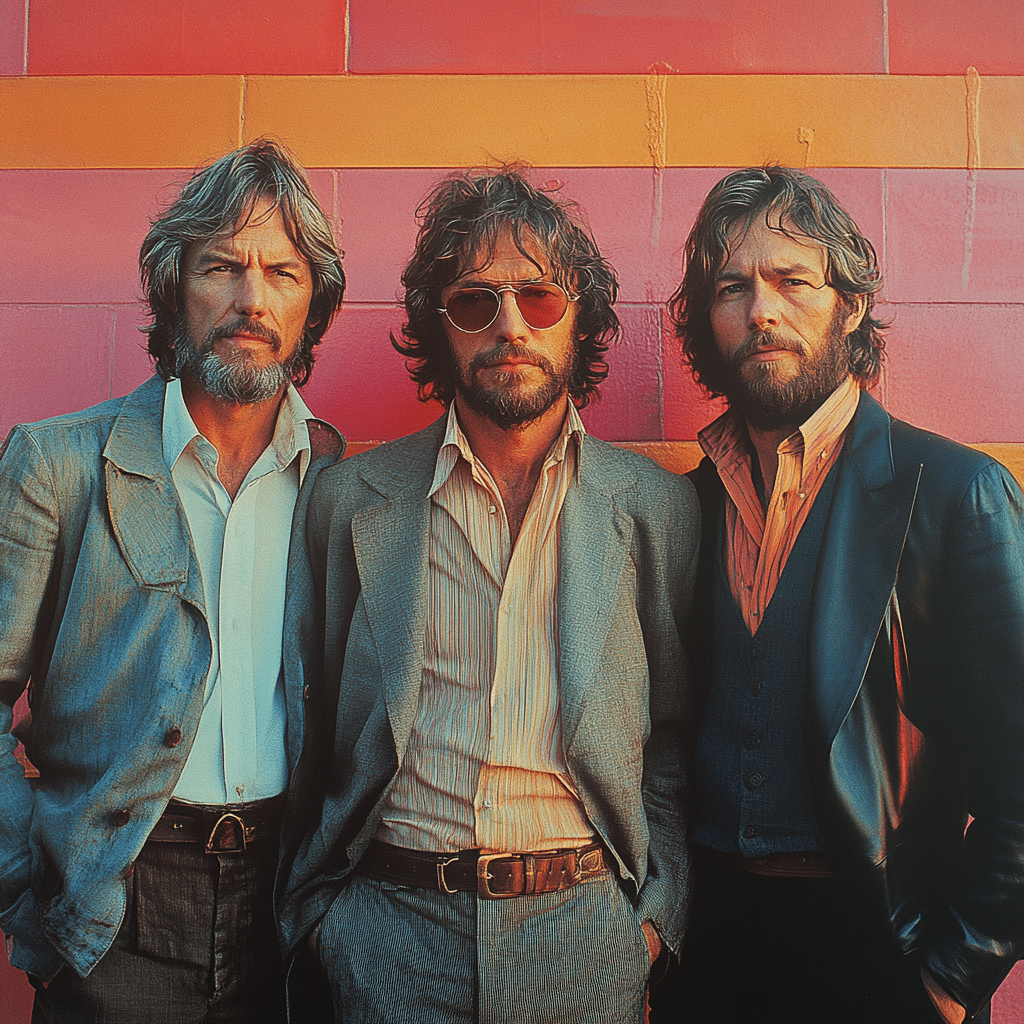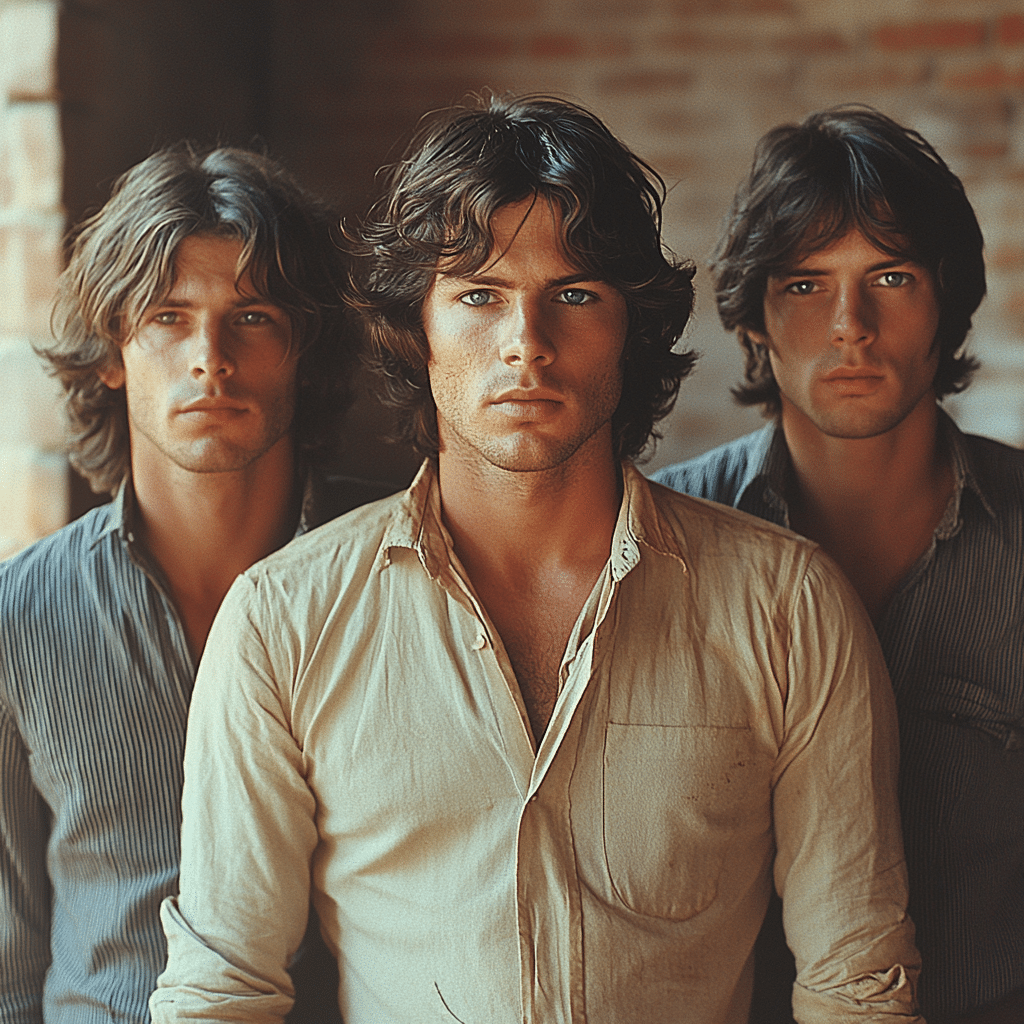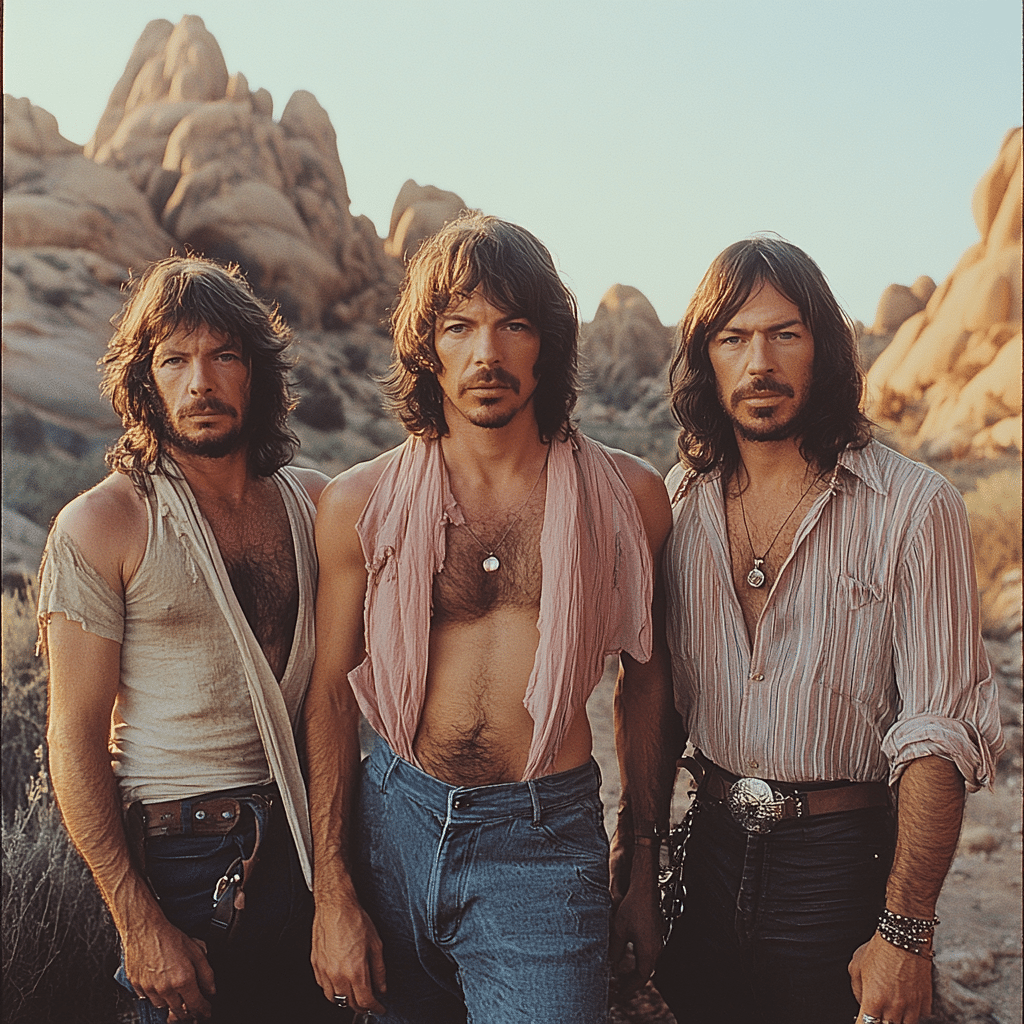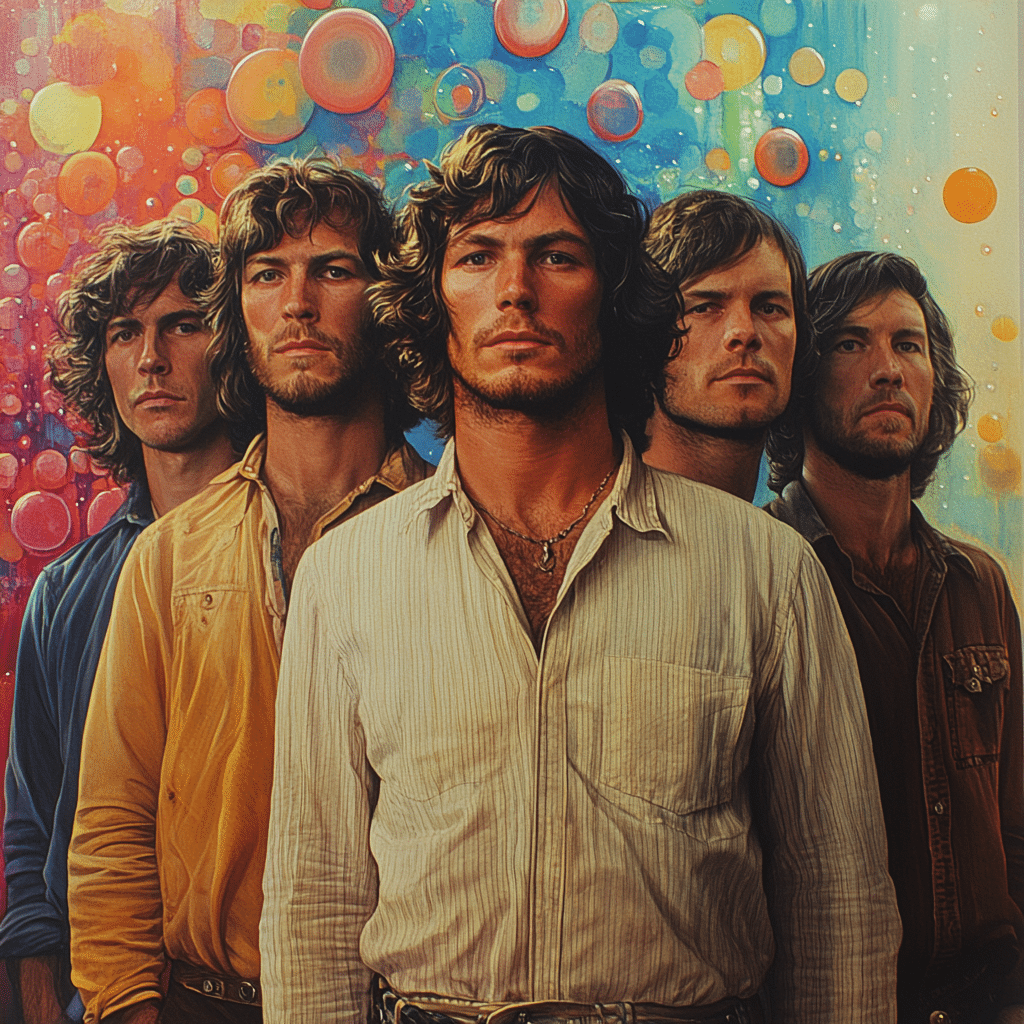
Pink Floyd Band Members And Their Incredible Legacy
Pink Floyd, an iconic rock band that formed in 1965, boasts a legacy rich with innovation and creativity. Each of the Pink Floyd band members—Syd Barrett, Roger Waters, Richard Wright, Nick Mason, and David Gilmour—brought unique talents to the table, crafting a sound that has influenced generations of musicians and filmmakers. Their vision not only changed the landscape of rock but also paved the way for an artistic dialogue that resonates deeply across various genres. In this piece, we’ll dive into each member’s incredible contributions and how they’ve shaped both music and popular culture.
The Pink Floyd Band Members: Icons of Innovation
1. Syd Barrett: The Visionary Founder
Syd Barrett wasn’t just the original frontman; he was the heartbeat of Pink Floyd during their early years. With his imaginative songwriting and experimental guitar riffs, Barrett was crucial in crafting the band’s dreamy, psychedelic sound. Tracks like “See Emily Play” and “Arnold Layne” highlight his whimsical lyrics and innovative approach to melody. Sadly, his struggles with mental health led to his departure in 1968, marking a pivotal shift for the band. His impact, however, echoes throughout their subsequent albums and remains felt in contemporary music, as artists like Kurt Cobain’s daughter, Frances Bean, draw inspiration from Barrett’s haunting lyricism.
2. Roger Waters: The Conceptual Architect
Roger Waters emerged as Pink Floyd’s principal songwriter and conceptual backbone. He brought a depth to their music that delved into themes of isolation, war, and societal pressures. His work on masterpieces like The Wall and The Dark Side of the Moon established Pink Floyd not just as a band but as a cultural phenomenon. With lyrical genius and theatrical flair, he transformed rock music into a medium for storytelling that resonated with fans and critics alike. In many ways, Waters challenged the status quo, setting a precedent that inspires artists across various disciplines today, including filmmakers who grapple with similar themes in their work.
3. David Gilmour: The Sonic Innovator
When David Gilmour joined Pink Floyd in 1967, he brought with him a signature sound that would define the band’s evolution. With his emotional guitar solos and rich vocal harmony, Gilmour delivered timeless classics such as “Comfortably Numb” and “Wish You Were Here.” His technical skills not only enhanced the band’s music but also pushed the boundaries of sound engineering. Post-Waters, Gilmour’s leadership solidified the band’s identity and nurtured a new era of creativity. The album The Endless River, pieced together with studio recordings involving the other members, serves as a testament to his commitment to the band’s legacy, ensuring that the music continues to resonate with audiences worldwide.
4. Richard Wright: The Melodic Heart
Richard Wright, the band’s keyboardist and co-vocalist, crafted much of Pink Floyd’s lush soundscapes. Tracks such as “The Great Gig in the Sky” reveal his ability to evoke raw emotion through music, often elevating the band’s compositions. Wright’s melodic contributions were essential in shaping their atmospheric and immersive music. Beyond playing, he was heavily involved in songwriting and arranging, leaving a considerable mark on Pink Floyd’s artistic direction. His influence can even be traced in the styles of various 80s rock bands, as many sought to capture the same emotional depth that Wright so effortlessly created.
5. Nick Mason: The Rhythmic Foundation
As the only member to play on all of Pink Floyd’s albums, Nick Mason is often seen as the glue holding the band together. His drumming, characterized by precision and fluidity, can be heard in defining songs like “Time” and “Money”. But Mason’s contribution didn’t stop at the drums; he also showed a keen interest in sound design and experimental projects, pushing the band to explore new auditory territories. His tribute band, “Saucerful of Secrets,” showcases his passion for keeping Pink Floyd’s spirit alive, making sure that new audiences can discover the band’s rich history. Mason’s involvement in various projects reflects a dedication to not only preserving the past but also engaging with contemporary music culture.

The Ripple Effect: Pink Floyd’s Influence on Pop Culture
The impact of Pink Floyd band members extends far beyond the realm of music. Their innovative live shows set the standard for theatricality in rock concerts. Elaborate visuals and immersive experiences became expected in the industry, influencing bands like U2 and Radiohead. Themes of loss and existential angst, prevalent in Pink Floyd’s work, found echoes in the music of modern artists and filmmakers alike. For instance, the emotional weight in the lyrics penned by Frances Bean exemplifies the resonant nature of Pink Floyd’s storytelling. Film adaptations of their music, such as The Wall, also brought their themes to life, inviting viewers into a world filled with both visual and auditory stimuli.
Pink Floyd and the Experimental Nature of Film
Pink Floyd’s crossover into film has left a significant mark on cinema. Their work on The Wall, directed by Alan Parker, exemplifies their ability to merge music with potent storytelling. This film explores profound issues like alienation and mental health—topics that align closely with their music. Collaborations with noted actors, including Michael Caine—who starred in various adaptations of David Bowie movies—illustrate how the band’s music seamlessly intertwines with cinematic narratives. Furthermore, the use of their tracks in films has solidified their status as a cultural touchstone, one that continues to inspire filmmakers exploring artistic and thematic connections.

The Enduring Legacy of Pink Floyd Band Members
The incredible contributions of every Pink Floyd band member have undeniably shaped the music world. Their innovative storytelling and experimental sound paved the way for artists who came after them, creating a rich tapestry of inspiration. Themes explored in their music—such as the human experience, isolation, and societal critique—remain relevant today. As we look towards the future in 2024 and beyond, the echoes of Pink Floyd will undoubtedly resonate through the works of contemporary musicians and filmmakers, reaffirming their status as pioneering legends. The enduring spirit of Pink Floyd ensures that their music continues to challenge and inspire, showcasing the timeless nature of their creative genius, much like how companies striving for excellence utilize tools such as a mortgage rates calculator to navigate financial decisions.
In conclusion, Pink Floyd’s members individually and collectively created music that has not only defined genres but has also reached into various facets of art and culture. Their legacy continues to provoke thought and inspire creativity, making Pink Floyd an everlasting influence in the landscape of music and beyond. As filmmakers and musicians alike look to the future, the lessons learned from the Pink Floyd band members will surely continue shaping artistic endeavors for years to come.
Pink Floyd Band Members: Trivia and Interesting Facts
Early Days and Unique Sounds
Did you know that Pink Floyd originally formed in 1965 under the name “The Tea Set”? That’s right! The band changed their name just before a gig because another band was using the same one. Syd Barrett, a key founding member, was the driving force behind their early psychedelic sound. His contributions, however, were often shadowed by his struggles with mental health, which led to his departure from the band by 1968. This left a significant gap, as Barrett’s visionary music set the stage for the experimental journey that Pink Floyd would undertake. Speaking of journeys, it’s ironic how something as mundane but crucial as dunelm fitted sheets can provide a sense of comfort while listening to their classic albums like The Dark Side of the Moon.
The Transition and Creative Evolution
When Syd left, Roger Waters became the primary lyricist, steering the band into deeper conceptual territory. The band’s comics-like storytelling took shape in songs such as “The Wall,” which tackled themes of isolation and societal pressures. Interestingly, Waters famously went toe-to-toe with Jim Mora over the interpretation of lyrical meanings, highlighting the intense passion behind the band’s work and their quest for artistic integrity. Their blend of philosophy with rock music made their concerts an immersive experience that fans still rave about. Just like Emily Wilkinson, who continues to inspire with her artistic vision, the members of Pink Floyd have shown that music can be a powerful medium for expression.
Lasting Impact and Modern Connections
As time went on, Pink Floyd transformed even more, welcoming keyboardist Richard Wright, who contributed notably to their rich sound landscapes until the band’s dissolution in the 1990s. After the split, former members like David Gilmour and Nick Mason pursued solo careers, yet their influences remain woven into the fabric of rock music. With the rise of platforms showcasing music legends, videos like those exploring alien x videos illustrate how their legacy continues to fascinate new generations. And let’s not forget that Pink Floyd’s public persona often hinted at secretive networks akin to masoneria, alluding to their complex narratives layered within their music.
Through trials, changes, and large-scale tours—much like navigating shifting trends like the 10yr treasury—the band’s spirit persists. Whether you’re at Emagine Lakeville enjoying a classic film or spinning Animals at home, the impact of Pink Floyd band members lives on, reminding us that their music is as timeless as ever.

How many original members of Pink Floyd are still alive?
Only two original members of Pink Floyd are still alive: David Gilmour and Nick Mason.
What happened to Pink Floyd’s lead singer?
Syd Barrett, the band’s main songwriter and lead singer, passed away in 2006 due to complications from diabetes, and his deteriorating mental health led to his departure from the band in 1968.
Why did Pink Floyd break up?
Pink Floyd’s breakup stemmed from growing tensions, particularly between Roger Waters and David Gilmour. Their relationship unraveled during the making of “The Final Cut,” as Gilmour felt Waters was turning the band into a platform for his own political beliefs.
Who were the two lead singers for Pink Floyd?
David Gilmour and Roger Waters were the two main lead singers for Pink Floyd, with Gilmour contributing most of the later vocals after Barrett’s departure.
Are David Gilmour and Roger Waters still friends?
David Gilmour and Roger Waters have had a complicated relationship over the years. While they occasionally reunite for events, they’ve often been at odds, making it hard to say they’re really friends.
Who is the richest Pink Floyd member?
As of now, David Gilmour is often cited as the richest member of Pink Floyd, mainly due to his successful solo career and various business ventures.
What is the meaning behind the song “Shine on You Crazy Diamond”?
“Shine on You Crazy Diamond” is a tribute to Syd Barrett, celebrating his genius and lamenting his decline into mental illness, reflecting the band’s sadness over his struggles.
What is Pink Floyd’s biggest hit?
Pink Floyd’s biggest hit is arguably “Another Brick in the Wall, Part 2,” which topped charts worldwide and became an anthem for youth rebellion.
Who owns the rights to Pink Floyd music?
The rights to Pink Floyd’s music are owned largely by the band members, along with various record labels. Over the years, these rights have shifted due to different deals and sales.
Why did Roger Waters get kicked out of Pink Floyd?
Roger Waters left Pink Floyd after tensions in the band boiled over, with key disagreements about the band’s direction, particularly surrounding his desire to focus on political messages.
Why did Roger Waters fire his son?
Roger Waters reportedly fired his son from a tour because he felt it would be seen as favoritism, and he wanted to maintain a professional atmosphere.
When was the last time Pink Floyd was together?
The last time Pink Floyd was together as a band was for the recording of “The Endless River,” which was released in 2014, but the actual recording involved studio material with Waters from earlier sessions.
Who was the true leader of Pink Floyd?
Syd Barrett is often seen as the true leader of Pink Floyd in their early years due to his creative influence and songwriting, though the band evolved into a more collaborative effort later on.
Who was the most important member of Pink Floyd?
While all five original members contributed significantly in different ways, many fans view David Gilmour as the most important member due to his guitar work and vocal contributions after Barrett’s departure.
How many of Pink Floyd are still alive?
Only two of the original five members of Pink Floyd are still alive: David Gilmour and Nick Mason.











